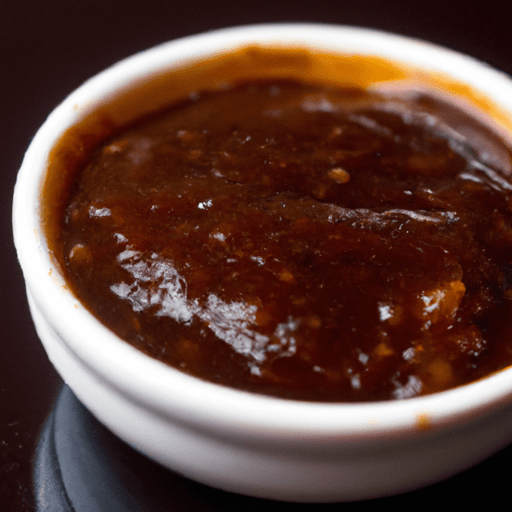All About Adobo Sauce: A Fiery and Flavorful Delight
Are you ready to tantalize your taste buds with a sauce that packs a punch? Look no further than adobo sauce, a fiery and flavorful delight that is a staple in Mexican and Filipino cuisines. This versatile sauce lends a unique character to dishes and brings a mouthwatering blend of tangy, smoky, and spicy flavors to the table.
The Taste Explosion
Adobo sauce is known for its complex and robust flavor profile. It is the perfect harmony of vinegar, garlic, herbs, spices, and chiles. The key ingredient, chiles, provides the sauce with its characteristic heat, ranging from mildly warm to mouth-searingly spicy. The vinegar adds a tangy kick, while the garlic and spices infuse the sauce with aromatic richness.
Common Uses in Cooking
Adobo sauce is incredibly versatile and can be used in numerous dishes to add a delightful twist. It is most commonly used as a marinade or a sauce for meat, fish, or vegetables. The sauce works wonders when used as a glaze for grilling or barbecuing, giving a tantalizing char and smoky flavor to the dish. Adobo sauce can also be used as a dip, a condiment, or even as a flavor base for soups, stews, and stir-fries.
Nutritional Value
In addition to its bold flavor, adobo sauce offers several nutritional benefits. It contains essential vitamins and minerals including vitamin C, iron, and potassium. The garlic in the sauce is known for its antibacterial properties and potential heart health benefits. However, the nutritional value can vary depending on the specific ingredients used and the preparation method.
A Rich History
Adobo sauce has a rich and intriguing history that spans across different cultures. While widely associated with Mexican and Filipino cuisines, its roots can be traced back to Spanish colonization. The Spanish explorers brought the concept of marinating meat in vinegar and spices to the Philippines, where it evolved into the staple dish known as adobo. This traditional cooking technique was then shared with other countries, including Mexico, which gave birth to the famous adobo sauce we know today.
Fun Facts
Here are some fun and interesting facts about adobo sauce:
- The word “adobo” comes from the Spanish term “adobar,” which means to marinate or season.
- Different regions have their own variations of adobo sauce, incorporating local ingredients and spices.
- In Mexico, adobo sauce is often made with added tomatoes or tomato paste, giving it a rich and vibrant red color.
- Adobo sauce can be made from scratch or purchased pre-made from specialty stores, making it accessible to a wide range of home cooks.
Adobo sauce is a treasure trove of flavors waiting to be savored. Whether you’re grilling, marinating, or adding a spoonful to your favorite dish, this fiery and flavorful sauce is sure to leave a lasting impression. So, why not give it a try and elevate your culinary adventures with the tantalizing taste of adobo sauce?
Adobo Sauce:
Origin: Adobo sauce is a traditional Mexican sauce that traces its roots back to the indigenous people of Mexico. The word “adobo” comes from the Spanish word “adobar,” which means to marinate or marinating sauce.
Common Uses: Adobo sauce is commonly used as a marinade, a sauce, or a condiment in Mexican cuisine. It is made by blending together various ingredients such as chilies, vinegar, garlic, herbs, and spices. The sauce is known for its rich, smoky, and tangy flavor profile.
Nutritional Benefits: The nutritional benefits of adobo sauce depend on its specific ingredients. However, generally, it contains various beneficial compounds. For example, chili peppers are rich in antioxidants and vitamins A and C. Garlic is known for its potential antibacterial and anti-inflammatory properties. Vinegar is often used in adobo sauce, which can aid digestion and provide a small amount of nutrients like potassium.
Unique Properties: Adobo sauce is characterized by its versatility and ability to add depth of flavor to various dishes. It can be used as a marinade for meats such as chicken, pork, or beef, or as a flavoring agent in stews, soups, and beans. The sauce is also widely used as a condiment for tacos, burritos, enchiladas, and other Mexican dishes. Its pungent and robust flavor adds a delicious taste to many recipes.
Historical Significance: Adobo sauce has a long history in Mexican cuisine. It is believed to have been developed by indigenous people before the arrival of Spanish conquistadors. The original adobo sauce was made by marinating meat in a mixture of chili peppers and water, which served as a means to preserve the meat. Over time, the recipe evolved and incorporated additional ingredients like vinegar, herbs, and spices. Today, adobo sauce continues to be an integral part of Mexican cooking and is enjoyed both domestically and around the world.




Use the share button below if you liked it.
It makes me smile, when I see it.